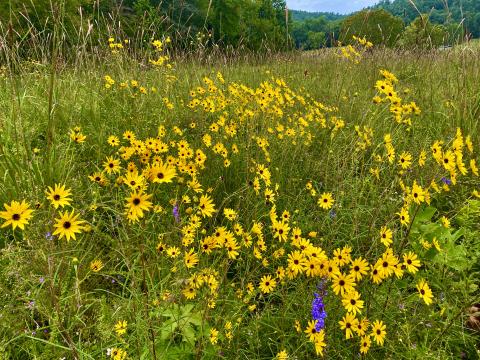Wildlife Cover
By Steve Roark
Volunteer Cumberland Gap National Historical Park
Requirements for good wildlife habitat can be broken down into three basic needs: water, food, and cover. While the need for water and food is pretty obvious, cover is more dynamic, and the need varies from day to day and season to season.
Okay, here are the basics: wildlife cover is defined as a space where an animal can be kept safe from predators and bad weather. Some form of vegetation is an obvious example of cover, but so are rocks and brush piles. All wildlife species need a variety of cover types to survive, and what follows is a rundown of various cover types found in nature or can be provided by folks interested in juicing up wildlife populations on their property.
Nest Cover: Birds, small mammals, and insects use trees and shrubs for nesting. Not only are branches and leaves utilized, but cavities in old trees are especially critical for some animal species.
Brood Cover: Once born, cover to raise and nurture young to maturity takes on various forms. Some raptors need trees with an open canopy, while some songbirds need closed canopies or heavy brush for brood cover
Roosting Cover: Every layer of vegetation, from tall overstory trees to grass and shrubs on the forest floor, is a favored cover while sleeping for various species of wildlife.
Escape Cover: Animals often need a quick getaway place, and the type needed varies by species. This could be something as simple as a thick stand of blackberry bushes or a crack in a rock
Loafing Cover: Wildlife needs quiet areas where they can spend some down time in relative safety from predator or human disturbance.
Thermal Cover: This is most important in cold climates. Protection from temperature extremes, wind, and storms are essential in harsh weather.
Maybe you have room in your yard or farm to play around with creating areas of wildlife cover. If you build it, they will come. Whether you’re attracting an individual species, or several, a little research will assure you get satisfactory results. Sources for more information include your local state forestry office, wildlife agency, or extension service.
.
- Log in to post comments
